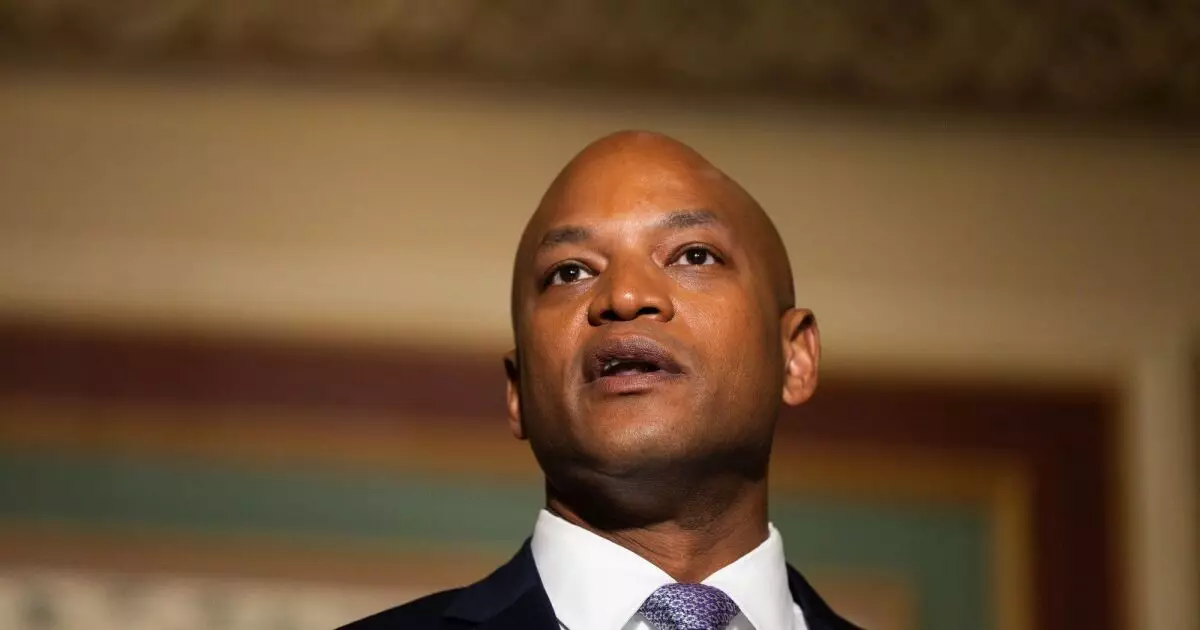The state of Maryland, despite its prestigious AAA credit rating, is grappling with a staggering $3 billion budget deficit. This fiscal shortfall stems from a combination of factors including sluggish economic growth, ballooning Medicaid expenditures, and the conclusion of various pandemic-relief programs. As the state grapples with its financial landscape, Governor Wes Moore has publicly resisted the idea of raising taxes, signaling a highly contentious budget negotiation season ahead.
Governor Moore has firmly expressed his position on revenue generation, asserting a commitment to not burden working Marylanders further. During a press conference, he articulated the rationale behind his hesitance to raise taxes, highlighting a self-imposed “high bar” that any proposed revenue measures must meet. Moore emphasized the structural deficit inherited from prior administrations, which he described as a product of unsustainable spending and embarrassingly slow growth rates. His upcoming budget proposal, which aims to address a significant portion of the deficit, will be a critical moment in Maryland’s fiscal policy trajectory.
As Maryland’s government begins its 90-day legislative session, it opens with a general fund balance of $27.2 billion. This figure provides a cushion for policymakers, yet it simultaneously underscores the urgency with which they must act to resolve the looming shortfall. Governor Moore’s strategies, set to be unveiled shortly, will likely revolve around significant cuts—specifically targeting $2 billion of the $3 billion deficit. As these discussions take shape, they’ll be met with scrutiny and opposition from various political factions.
The Republican contingent in Maryland has been vociferous in its rejection of any tax increases. Senate Minority Leader Steve Hershey’s unequivocal stance—vowing not to support any form of raised revenue—illustrates the deepening partisan divide over fiscal responsibility in the state. This ideological battle complicates the approach to resolving the budget shortfall, particularly as outcomes related to education funding, environmental programs, and public services hang in the balance.
Among the most contentious areas in the proposed budget are cuts to the Blueprint for Maryland’s Future program, which allocates vital resources to educational initiatives throughout the state. The proposed reductions have elicited strong responses from teachers’ unions, who are concerned about the potential erosion of support for public education. Similarly, discussions around scaling back on environmental efforts further complicate the landscape, especially at a time when federal initiatives are subject to change. The potential repercussions include a shrinking budget for state-level green energy programs supported by legislation like the Inflation Reduction Act.
The budgetary struggles occurring in Maryland have not gone unnoticed by financial rating agencies. Moody’s Investors Service has expressed concerns, placing a negative outlook on Maryland’s credit rating. The agency‘s analysis highlights the difficulties the state faces in achieving fiscal balance while maintaining service delivery without imposing additional tax burdens. This negative outlook from Moody’s serves as a wake-up call for state legislators as they work to find solutions to their financial dilemmas.
Beyond Maryland, the situation reflects a growing trend across various states as they prepare for potential fiscal uncertainties in the coming years. Analysts from S&P Global Ratings warn that states should brace themselves for unpredictable economic conditions, influenced by shifts at the federal level and changing political climates. As the newly elected administration in Washington, D.C., prepares to navigate its own set of challenges, Maryland’s budget situation may become a focal point of discussion for broader state-federal financial interactions.
As Maryland moves forward into a potentially contentious budgetary season, the intersections of economic policies, political ideologies, and social responsibilities will all play pivotal roles in shaping the state’s financial future. The need for prudent fiscal management, innovative revenue strategies, and a bipartisan commitment to serve Marylanders remains critical as the governor and legislators seek to stabilize the state’s budget and restore confidence in its economic trajectory.

